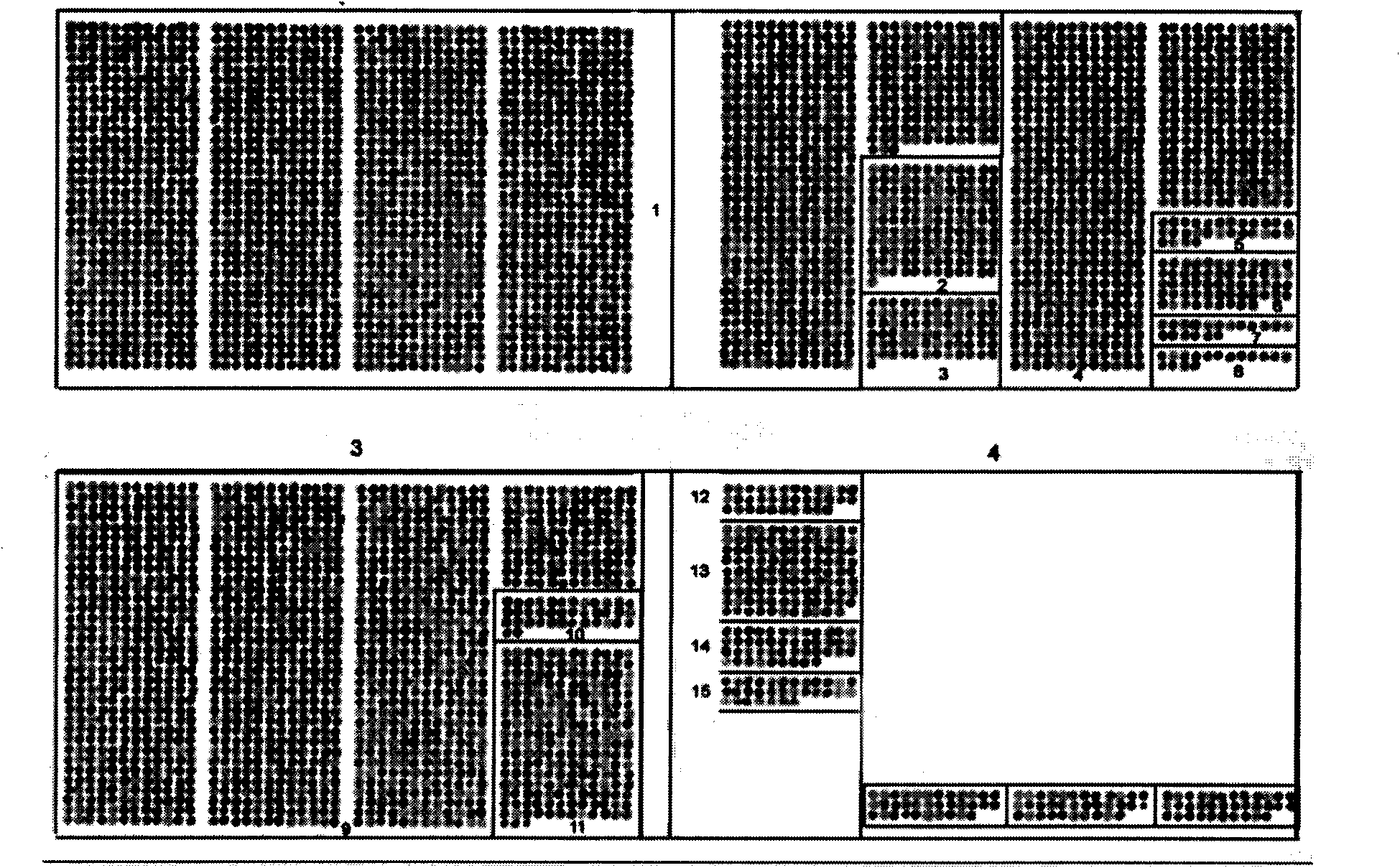Novel specific polypeptide and application thereof in preparing medicament for diagnosing, preventing and treating severe acute respiratory syndrome caused by coronaviruses
A specific and new technology, applied in the field of new specific peptides, can solve the problems of time-wasting onset, poor specificity, non-toxicity of immunostimulation, etc.
- Summary
- Abstract
- Description
- Claims
- Application Information
AI Technical Summary
Problems solved by technology
Method used
Image
Examples
example 1
[1196] Example 1: SARS polypeptide array chip construction and biological probe detection
[1197] 1.1 Construction of SARS peptide array chip
[1198] The 15 ORFs protein sequences encoded by the entire SARS genome were designed by software system (DIGEN, JeriniBiotools GmbH, Beilin, Germany) and automated equipment (AutoSpot, Intavis Bioanalytical Instruments, Lagenfeld, Germany), and were directly expressed on the cellulose membrane according to the principle of sequence drift. Synthesize the amino acid sequence of the polypeptide, and arrange these overlapping protein polypeptide fragments on the chip at a density of 24 × 18, that is, the Overlapping Peptide Array (Overlapping Peptide Array) technology. PEG-modified cellulose membranes with primary amino groups were also purchased from Intavis, Germany. After each amino acid spotting, react with 0.5 M amino-protecting agent (fmoc) chemically activated by HOBT and DIPC for at least 15 minutes. After removing the protectiv...
example 2
[1202] Example 2: Peptide array chip (membrane) quality detection
[1203] Multiple backup M protein sequence arrays were synthesized on a set of membranes. These replica membranes are used for quality control monitoring and to evaluate the reproducibility and reliability of the results. The peptide array detection results of SARS patients in the acute phase and recovery phase and the control group were used to verify the quality of the peptide array chip. Nine polypeptide sequence sites were randomly selected, and their fluorescence intensity was measured. The results showed that the characteristics and fluorescence intensities of the three replicated M protein sequence arrays (membranes) were very similar, and the average standard deviation (SD) of the relative fluorescence intensities of multiple backup M protein sequence arrays was also very close. In this study, all peptide array chips (membranes) were verified by the same method, and all showed consistent results.
example 3
[1204] Example 3: Analysis of SARS patient serum and normal human serum using peptide array chips
[1205] 3.1 Collection of patient serum and normal human serum
[1206] Sera from 10 SARS-infected patients and 10 normal controls were used for the detection of SARS peptide array chip bioprobes. Serum was collected separately (see Table 3 for serum collection information). Diagnosis is based on patient contact history and confirmed by PCR analysis and antibody testing recommended by the World Health Organization. Serum collection time points in the acute phase were 5 to 13 days (average 6.8 days) after clinical onset. The serum collection time point in the recovery period was 17 to 31 days (average 24.7 days) after clinical onset. Patient 5 died approximately 1 month after clinical onset.
[1207] Table 3 Serum collection information of SARS patients in the acute phase and recovery phase
[1208] case number
Acute phase (days after clinical onset)
Recovery p...
PUM
 Login to View More
Login to View More Abstract
Description
Claims
Application Information
 Login to View More
Login to View More - R&D Engineer
- R&D Manager
- IP Professional
- Industry Leading Data Capabilities
- Powerful AI technology
- Patent DNA Extraction
Browse by: Latest US Patents, China's latest patents, Technical Efficacy Thesaurus, Application Domain, Technology Topic, Popular Technical Reports.
© 2024 PatSnap. All rights reserved.Legal|Privacy policy|Modern Slavery Act Transparency Statement|Sitemap|About US| Contact US: help@patsnap.com










